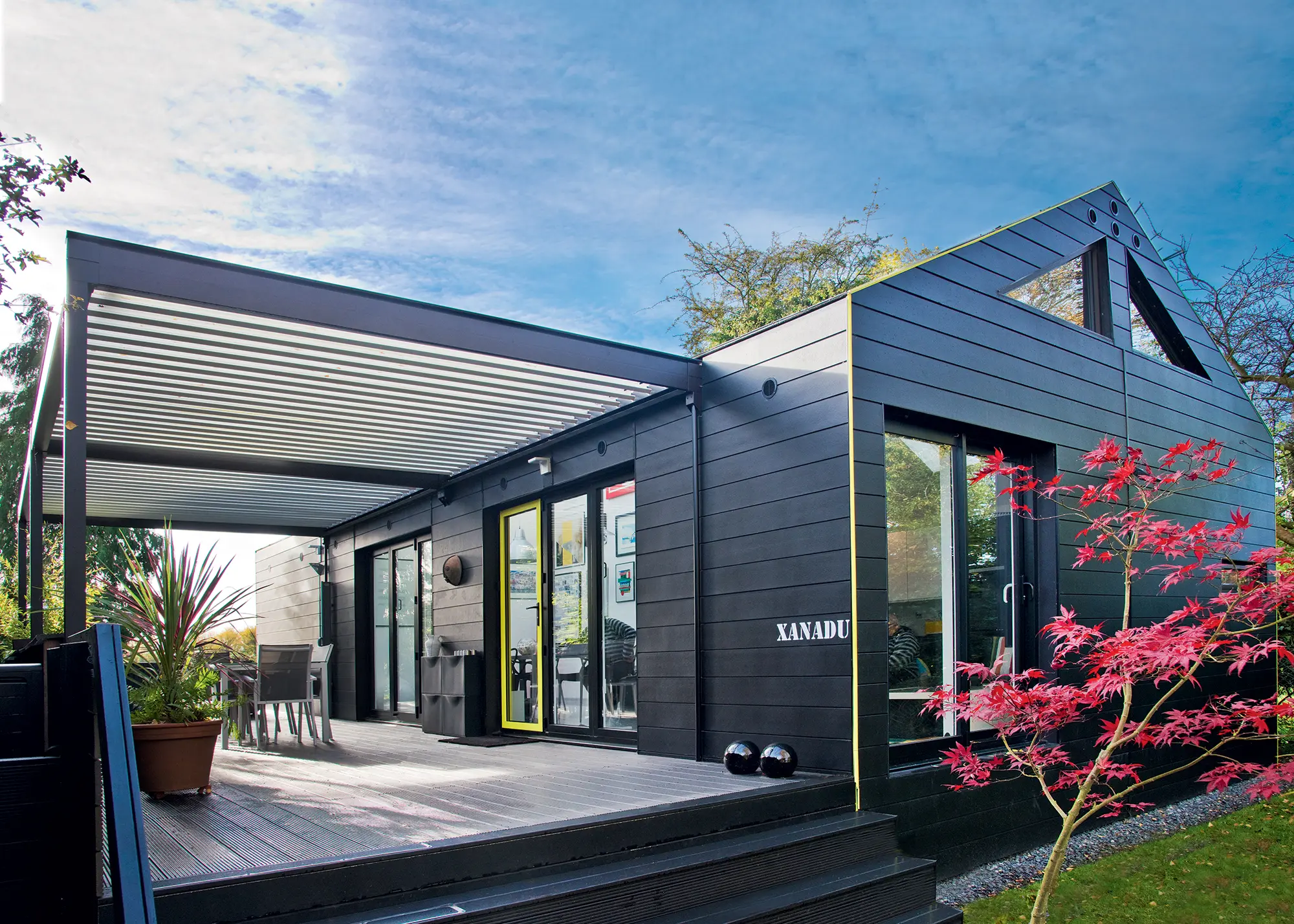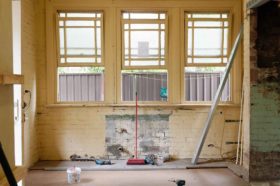

Fibre-cement cladding is a manmade product suitable for exterior wall and roof finishes. It’s durable, easy to work with and available in a wide range of colours and styles to suit traditional and modern home designs. Its versatility means it can be used for a variety of projects – and it’s equally as suitable for new builds as it is for updating existing properties.
Originally developed as a low-maintenance alternative to timber cladding, it’s now also widely used as a budget-friendly substitute for slate – not to mention as an interesting modern material in its own right.
Fibre-cement cladding is created by mixing cellulose, fillers and fibres with water – before cement is added to form wet sheets.
The sheets are rolled and pressed to extract excess moisture. The mixture remains pliable for a short time after it’s formed, so it can be shaped into anything from small tiles through to planks and large-format panels.
The finished product can be either through-coloured or painted to achieve a specific aesthetic.
The key advantage is that it can help to reduce the risk of visible scratches, scuffs and chips developing over time.

For this project, the homeowners were keen to create a contemporary home in keeping with the local vernacular of black wooden barns and houses that’s prevalent in this part of Essex. However, the annexe’s proximity to the boundary wall meant that fire regulations came into play – and a timber finish wasn’t permitted. Instead, they opted for smooth fibre-cement cladding. This is laid on battens and counter battens, creating a rain screen, with a breather membrane on the face of the timber frame to create a void for air circulation and for services to run. The aluminium gutters are also concealed within this cavity, helping to maintain a clean, uncluttered aesthetic. Black fibre-cement slate was used for the roof to complement the cladding, while the gables are trimmed with bright yellow-coated aluminium channels. These define the edges of the facades and are echoed in the frame colour for the glazed doors that lead out onto the deck. |
Maintenance is very low as it won’t need re-painting. The downside is that you’ll be relatively limited in terms of palettes and textures.
Alternatively, the standard grey sheets can be painted or stained (usually in the factory) with a variety of colours and effects – even down to incorporating realistic woodgrain patterns or riven finishes that mimic natural slate.
Whichever option you choose, the units will be given a strong water-based or acrylic topcoat to improve weather resistance.
Fibre-cement cladding has a very low water absorption rate, is frost-proof and fire-resistant, and – thanks to the cement binder – won’t rust or rot. Upkeep is simple, too, involving little more than an annual wash down with mildly soapy water.
While it’s heavier than timber or PVCu, fibre-cement is nevertheless at the lighter end of the cladding spectrum. This means it is quick and simple for experienced contractors to fit (although do bear in mind that large panel types will need two people to lift).
With weatherboard styles, the traditional option is to nail or screw the planks onto a network of vertical battens.
These fixing points should be located at appropriate centres according to the manufacturer’s instructions. The boards should overlap at the horizontal joins to encourage water run-off.
Typically, the substrate – which can be anything from masonry to timber frame – will be sheathed with a membrane, with the battens fitted on top. Their section size should be at least 20mm to allow for consistent air movement behind the cladding.
Read more: How to clad a timber frame home
A special ventilation grill is fitted at the underside to prevent rodents getting in behind the boards, while a cap at the top inhibits rainwater ingress.
Some suppliers provide their boards pre-cut to size to ensure quality control when sealing exposed edges. They can also be cut on site using a circular saw or proprietary tool (such as James Hardie’s dust-reducing guillotine). This job is best left to a professional.
Installation is similar for slate-effect fibre-cement tiles, which will require both battens and counter battens. The tiles can be fixed in a traditional staggered pattern, overlap in a broken bond or fitted as large-format panels.
They’re usually nailed, but hook fixings are also possible and oversized units can be screwed into place. Marley Eternit’s products are suitable for vertical walling as well as roofs with pitches down to 15°.
The alternative is to use a secret-fix system. This is popular for panellised fibre-cement claddings as it can help to underpin a contemporary aesthetic.
One example is Cembrit’s Flow, an aluminium backing framework that allows for flush facades with no visible screws. Special grooves lock the boards or panels in place. The system is surprisingly flexible – you can cut units to size on site and adjust the groove spacing to match.
Fibre-cement cladding offers a low-maintenance exterior finish at a similar price point to mid-range timber products. Expect to pay from £25 per m2 on a supply-only basis, up to around £50-£60 per m2 fully installed.
High quality versions will come with 10-year warranties covering basic defects, such as cracking and peeling. You can expect a typical lifespan of at least 40 years (Building Research Establishment tests show fibre-cement slates can last for 60+ years).
Main Image: Fibre-cement cladding from James Hardie
